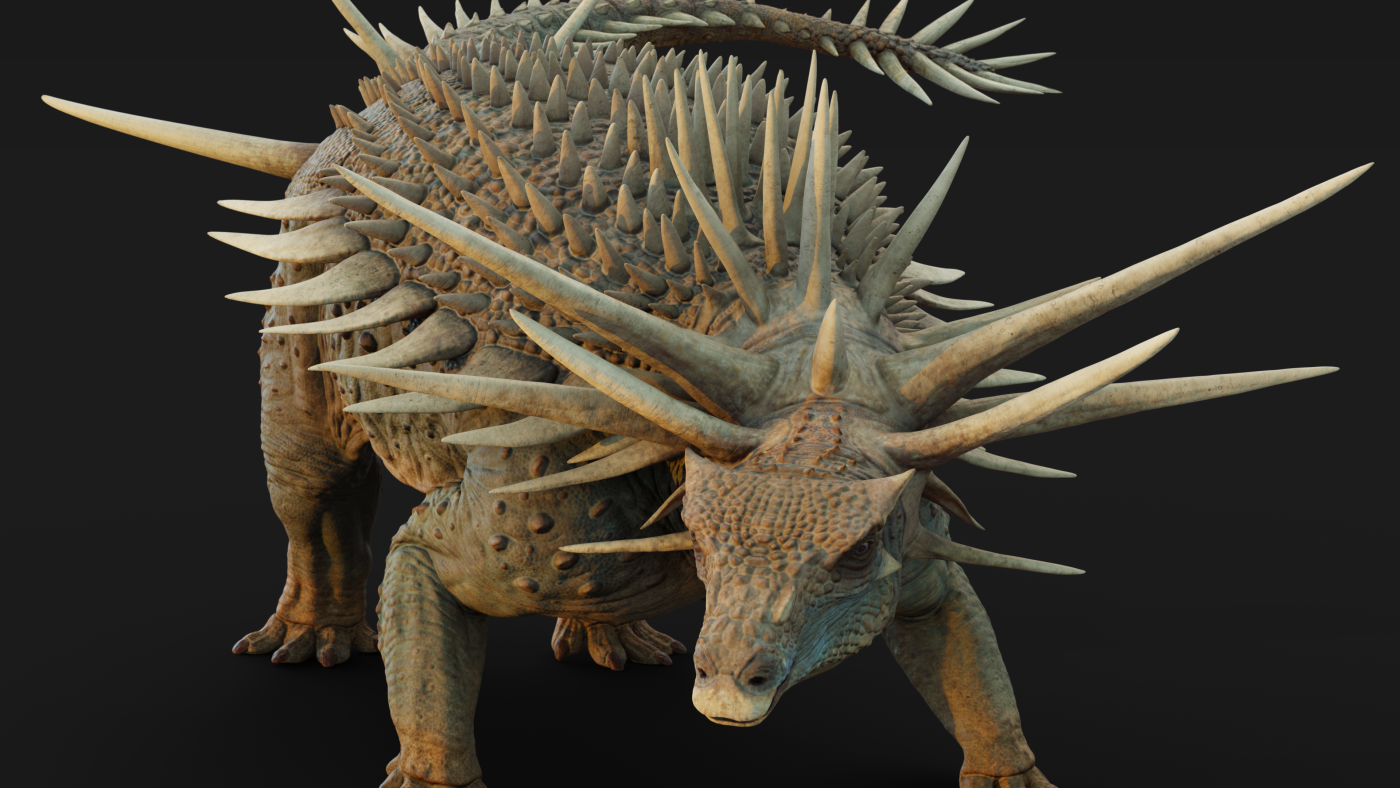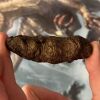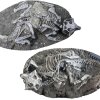Fossils of the creature Spicomellus revealed elaborate body armor used to attract mates and deter rivals.
Matt Dempsey/The Natural History Museum, London
hide caption
toggle caption
Matt Dempsey/The Natural History Museum, London
A dinosaur that roamed modern-day Morocco more than 165 million years ago had a neck covered in three-foot long spikes, a weapon on its tail and bony body armor, according to researchers who unearthed the curious beast’s remains.
The discovery of the animal Spicomellus in the Moroccan town of Boulemane painted a clearer picture of the bizarre, spiked ankylosaur, which was first described in 2021 based on the discovery of a single rib bone.
Researchers now understand that the four-legged herbivore, which was about the size of a small car, was much more elaborately armored than originally believed, according to research published last month in the journal Nature.
“Spicomellus had a diversity of plates and spikes extending from all over its body, including metre-long neck spikes, huge upwards-projecting spikes over the hips, and a whole range of long, blade-like spikes, pieces of armour made up of two long spikes, and plates down the shoulder,” research co-lead Susannah Maidment said in a statement to London’s Natural History Museum.
“We’ve never seen anything like this in any animal before.”
The Spicomellus‘ ribs were lined with fused spikes projecting outward — a feature never witnessed before in any other vertebrate, living or extinct.
Co-lead of the project Richard Butler, a paleobiology professor at the University of Birmingham, described seeing the fossil for the first time as “spine-tingling.”
“We just couldn’t believe how weird it was and how unlike any other dinosaur, or indeed any other animal we know of, alive or extinct,” Butler told the Natural History Museum.
“It turns much of what we thought we knew about ankylosaurs and their evolution on its head and demonstrates just how much there still is to learn about dinosaurs,” he added.
Researchers suggest that the Spicomellus‘ complex bone structure was used both to attract mates and deter rivals.
Discovering that the dinosaur had such elaborate armor that possibly prioritized form as much as function set the animal apart from its predecessors, which had less, more defensive covering on their bodies.
In addition to showy barbs along Spicomellus‘ exterior, remains of the animal’s tail also provided a stunning new detail for scientists.
Fused vertebrae going down into its tail formed a “handle,” likely leading to a club-like weapon at the end — a detail ankylosaur scientists had previously believed not to have evolved until the Cretaceous period, millions of years later.
“To find such elaborate armour in an early ankylosaur changes our understanding of how these dinosaurs evolved,” Maidment said.
“It shows just how significant Africa’s dinosaurs are, and how important it is to improve our understanding of them,” she said.
This story originally appeared on NPR




